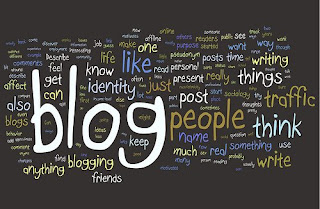
Given that the revised Bloom’s Taxonomy now places “creating” at the top of higher order thinking skills, perhaps it is important that we strive to build a common understanding as to what that means. I appreciate what Andrew Churches has done in giving concrete examples how "creating" can happen in the digital world:
- Programming – Whether it is creating their own applications, programming macros or developing games or multimedia applications within structured environments, students are routinely creating their own programs to suit their needs and goals.
- Filming, animating, videocasting, podcasting, mixing and remixing – these relate to the increasing availability of multimedia and multimedia editing tools. Students frequently capture, create, mix and remix content to produce unique products.
- Directing and producing – to directing or producing a product, performance or production is a highly creative process. It requires the student to have vision, understand the components and meld these into a coherent product.
- Publishing – whether via the web or from home computers, publishing in text, media or digital formats is increasing. Again this requires a huge overview of not only the content being published, but the process and product. Related to this concept are also Video blogging – the production of video blogs, blogging and also wiki-ing - creating, adding to and modify content in wikis. Creating or building Mash ups would also fit here
Are all creations equal?
It is obvious from the above definitions that creating in the digital world can take many forms and be done with innumerable tools, all of which are applicable in the educational arena. However, I wonder how we, as educators, facilitate performances of understanding where students are required to “create” while getting the biggest impact on learning regardless of the tool or medium?
David Perkins in Making Learning Whole cites two “creative” approaches to biology teaching ideas he’s observed: “dancing mitosis (students designed a dance to play out the steps of mitosis) and designing a fish (students were asked to design a fish to fit within some aquatic ecology. The students had to devise distinctive and reasonable adaptations of the fish that gave it its own ecological niche, profile the lifestyle and adaptive advantages of the creature, and also position it taxonomically.)"
As Perkins notes, both performances of understanding required students to create and be creative (and employed many of the tools and/or media mentioned above). However, which creative endeavor was simultaneously building conceptual understanding? I concur with Perkins that as educators we need to ask for creations that build understanding that aligns with the purpose of the learning and requires thinking within that discipline.
So are all creations creative?
I was first introduced to Sir Ken Robinson a couple of years ago when a friend shared this highly entertaining Ted Talk:
I was thrilled to learn that Robinson recently published a book, The Element, where he delves into creativity or being “in the element--the point between natural aptitude and personal passion.” I agree with him whole-heartedly that we need to be more in tune with children’s passions, to encourage and help them nourish those passions rather than suppress them. I also agree that we don’t always see certain natural aptitudes as positive because they don’t fit the “box” of learning we often create in schools. I haven’t yet finished the book, but I’m wondering how we balance the desire to facilitate finding “the element” and nourishing the vital critical thinking skills in all our students? I’m also wondering whether I know where my “element” is and/or if I have the courage to find it?








